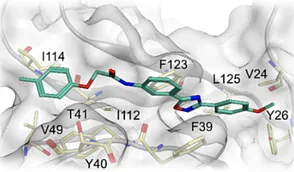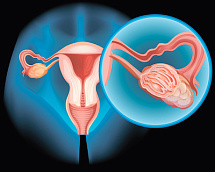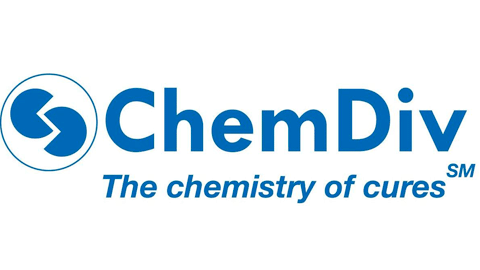Scientists launched regeneration after a heart attack, and healed the heart

Scientists launched regeneration after a heart attack, and healed the heart
Almost every tissue in the human body is able to recover from damage, regenerating — growing again. The skin repairs scratches, blood vessels grow together, lost blood is restored. Tissues are regenerated with the help of stem cells — non-specialized cells that hide in the tissue ready to divide until the moment when it becomes necessary to maintain the cell population of this tissue. But the regenerative potential of stem cells of a particular tissue is limited. Red bone marrow stem cells work continuously throughout life, because blood is renewed very quickly. However, epithelial stem cells are not capable of 100% repairing extensive damage, such as a burn. In this case, the cells of the connective tissue, which look different, cover the wound — and a scar remains.
The cells of the heart muscle do not have their own stem cells at all [1]. Cardiomyocytes are special cells — they are fused with each other into syncytium and connected by pores that conduct an electrical impulse instantly. Thanks to this, many cells in each part of the heart work synchronously, because errors in the work of the heart are deadly. Apparently, at some point in evolution, the heart lost its stem cells so that regeneration would not put up roadblocks. As a result, the heart even grows only due to hypertrophy — an increase in the size of cells, their pumping.
Suppression of cardiomyocyte regeneration is a beneficial feature of mammals that protects the heart from cancer. It is the additional tumor suppressors that block the possibility of rearrangements [2]. But due to the blockage of regeneration, connective tissue closes any damage to the heart. It is not sharpened to conduct electrical impulses, therefore, it disrupts the coherence in the work of heart cells. Therefore, after a heart attack — death of a part of the heart due to nutritional deficiency — arrhythmias and heart failure begins. At the moment, there is no treatment that would restore heart tissue.
Recently, scientists for the first time managed to bypass the limitation of heart regeneration: German biologists reported the achievement in Science (Y. Chen et al., 2021) [3]. The researchers used the method of partial reprogramming (PR): they short-term rejuvenated the cells of the heart of mice, restoring the ability to divide inherent in progenitor cells [4]. Within a few days, the PR cells of the heart were regenerated, and subsequently, the mice showed healthy parameters of the heart [3]. PR was performed quickly so as not to bring the cells to a completely childlike state — not specialized cells [5]. Such radical reprogramming would be fraught with the development of cancerous tumors.
Partial reprogramming was triggered by abrupt activation of four pluripotency factors, called the Yamanaka cocktail, for 6 days. Among other things, these factors can completely de-differentiate cells, triggering oncogenesis, so they need to be activated for a short time. The authors of the study confirmed that the activation of these factors in cardiomyocytes for only 12 days deprives them of their cellular identity, leading to the inevitable death of experimental animals. PR works only when activated before a heart attack or for several days after it. As expected, the less time elapses between a heart attack and the launch of PR, the more effective the method works.
Factors were activated using gene therapy; the method can be reworked and modified. What is important in the discovery is that it is in principle possible to regenerate heart tissue. By promoting regeneration in a therapeutic way, scientists have the potential to save or improve the lives of hundreds of millions of people.
For research in the field of regenerative medicine, it is often necessary to use a variety of compounds that regulate biological regeneration. In such cases, libraries help, in which all the substances you need are collected. ChemDiv offers the Regenerative Medicine Focused Library, which also includes regulators of cardiomyocyte progenitor cells. You can order this library by following the link https://store.chemdiv.com/catalog/therapeutic-areas/regenerative-medicine-focused-library/#close
References
Porrello, Enzo R., et al. "Transient regenerative potential of the neonatal mouse heart." Science 331.6020 (2011): 1078-1080.
Hatzistergos, Konstantinos E., et al. "Tumor suppressors RB1 and CDKN2a cooperatively regulate cell-cycle progression and differentiation during cardiomyocyte development and repair: implications for stimulating neomyogenesis with cell-based therapy." Circulation research 124.8 (2019): 1184-1197.
Chen, Yanpu, et al. "Reversible reprogramming of cardiomyocytes to a fetal state drives heart regeneration in mice." Science 373.6562 (2021): 1537-1540.
Yamanaka, Shinya, and Helen M. Blau. "Nuclear reprogramming to a pluripotent state by three approaches." Nature 465.7299 (2010): 704-712.
Ocampo, Alejandro, et al. "In vivo amelioration of age-associated hallmarks by partial reprogramming." Cell 167.7 (2016): 1719-1733.
Almost every tissue in the human body is able to recover from damage, regenerating — growing again. The skin repairs scratches, blood vessels grow together, lost blood is restored. Tissues are regenerated with the help of stem cells — non-specialized cells that hide in the tissue ready to divide until the moment when it becomes necessary to maintain the cell population of this tissue. But the regenerative potential of stem cells of a particular tissue is limited. Red bone marrow stem cells work continuously throughout life, because blood is renewed very quickly. However, epithelial stem cells are not capable of 100% repairing extensive damage, such as a burn. In this case, the cells of the connective tissue, which look different, cover the wound — and a scar remains.
The cells of the heart muscle do not have their own stem cells at all [1]. Cardiomyocytes are special cells — they are fused with each other into syncytium and connected by pores that conduct an electrical impulse instantly. Thanks to this, many cells in each part of the heart work synchronously, because errors in the work of the heart are deadly. Apparently, at some point in evolution, the heart lost its stem cells so that regeneration would not put up roadblocks. As a result, the heart even grows only due to hypertrophy — an increase in the size of cells, their pumping.
Suppression of cardiomyocyte regeneration is a beneficial feature of mammals that protects the heart from cancer. It is the additional tumor suppressors that block the possibility of rearrangements [2]. But due to the blockage of regeneration, connective tissue closes any damage to the heart. It is not sharpened to conduct electrical impulses, therefore, it disrupts the coherence in the work of heart cells. Therefore, after a heart attack — death of a part of the heart due to nutritional deficiency — arrhythmias and heart failure begins. At the moment, there is no treatment that would restore heart tissue.
Recently, scientists for the first time managed to bypass the limitation of heart regeneration: German biologists reported the achievement in Science (Y. Chen et al., 2021) [3]. The researchers used the method of partial reprogramming (PR): they short-term rejuvenated the cells of the heart of mice, restoring the ability to divide inherent in progenitor cells [4]. Within a few days, the PR cells of the heart were regenerated, and subsequently, the mice showed healthy parameters of the heart [3]. PR was performed quickly so as not to bring the cells to a completely childlike state — not specialized cells [5]. Such radical reprogramming would be fraught with the development of cancerous tumors.
Partial reprogramming was triggered by abrupt activation of four pluripotency factors, called the Yamanaka cocktail, for 6 days. Among other things, these factors can completely de-differentiate cells, triggering oncogenesis, so they need to be activated for a short time. The authors of the study confirmed that the activation of these factors in cardiomyocytes for only 12 days deprives them of their cellular identity, leading to the inevitable death of experimental animals. PR works only when activated before a heart attack or for several days after it. As expected, the less time elapses between a heart attack and the launch of PR, the more effective the method works.
Factors were activated using gene therapy; the method can be reworked and modified. What is important in the discovery is that it is in principle possible to regenerate heart tissue. By promoting regeneration in a therapeutic way, scientists have the potential to save or improve the lives of hundreds of millions of people.
For research in the field of regenerative medicine, it is often necessary to use a variety of compounds that regulate biological regeneration. In such cases, libraries help, in which all the substances you need are collected. ChemDiv offers the Regenerative Medicine Focused Library, which also includes regulators of cardiomyocyte progenitor cells. You can order this library by following the link https://store.chemdiv.com/catalog/therapeutic-areas/regenerative-medicine-focused-library/#close
References
Porrello, Enzo R., et al. "Transient regenerative potential of the neonatal mouse heart." Science 331.6020 (2011): 1078-1080.
Hatzistergos, Konstantinos E., et al. "Tumor suppressors RB1 and CDKN2a cooperatively regulate cell-cycle progression and differentiation during cardiomyocyte development and repair: implications for stimulating neomyogenesis with cell-based therapy." Circulation research 124.8 (2019): 1184-1197.
Chen, Yanpu, et al. "Reversible reprogramming of cardiomyocytes to a fetal state drives heart regeneration in mice." Science 373.6562 (2021): 1537-1540.
Yamanaka, Shinya, and Helen M. Blau. "Nuclear reprogramming to a pluripotent state by three approaches." Nature 465.7299 (2010): 704-712.
Ocampo, Alejandro, et al. "In vivo amelioration of age-associated hallmarks by partial reprogramming." Cell 167.7 (2016): 1719-1733.


